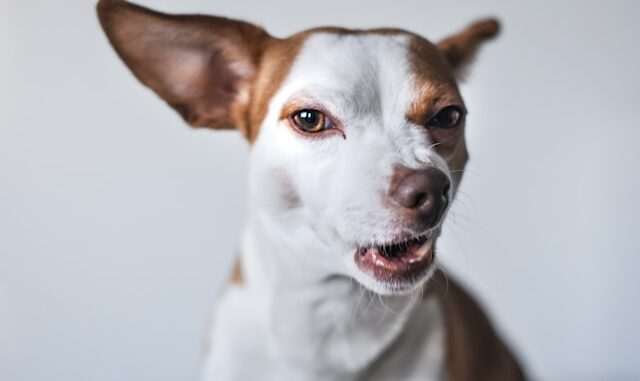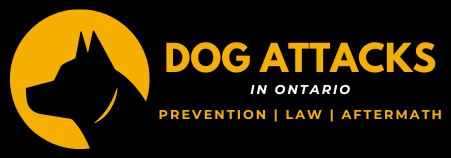
Our dogs are cherished members of the family, but even the most well-intentioned pup can have an unexpected moment of aggression. In Ontario, the Dog Owners’ Liability Act (DOLA) holds owners strictly liable for injuries caused by their dogs, regardless of prior behavior. While most dog bites are minor, severe incidents can lead to the designation of a dog as “dangerous,” resulting in restrictions like muzzle orders. This article explores preventative measures to keep your dog safe from such labels and ensures responsible canine citizenship.
Understanding Dangerous Dog Designations: When Prevention Becomes Crucial
The designation of a “dangerous dog” in Ontario can arise from two primary situations:
- Court Order: Following a dog bite incident, a judge might deem the dog a danger to public safety and issue a muzzle order as part of the court judgement.
- Municipal By-Law Enforcement: Animal control officers can investigate dog bite complaints. If they have evidence suggesting a significant threat, they can initiate proceedings to declare the dog “dangerous” through a hearing.
Key Factors in Dangerous Dog Designations: Avoiding the Red Flags
Several factors influence whether a dog is labelled dangerous, highlighting the importance of responsible ownership:
- Severity of Bite: The seriousness of injuries inflicted in a bite incident plays a major role. More severe injuries raise the risk of a dangerous dog designation.
- Prior Bite History: A history of previous bites, especially unprovoked attacks, significantly strengthens the case for a dangerous dog designation.
- Temperament Evaluation: Animal control officers or qualified animal behaviorists might assess your dog’s temperament to gauge its potential for aggression.
Preventive Strategies: Fostering a Responsible Canine Companion
By prioritizing responsible dog ownership, you can significantly reduce the chances of your dog being labelled dangerous:
- Early Socialization: Socialize your dog from a young age. Expose them to various people, animals, and environments to promote comfort and prevent fear-based reactivity.
- Obedience Training: Invest in quality obedience training. A well-trained dog is easier to control and less likely to react unpredictably in unfamiliar situations.
- Understanding Dog Body Language: Learn to recognize signs of stress or anxiety in your dog. This allows you to intervene before a potentially aggressive situation escalates.
- Responsible Leash Use: Always follow leash laws in public spaces. Maintain control of your dog and avoid unpredictable interactions with other dogs or people.
- Addressing Behavioral Issues: If you notice any signs of aggression, such as growling, snapping, or lunging, seek professional help from a qualified animal behaviorist immediately. Early intervention can address the root cause and prevent future incidents.
- Responsible Breed Selection: Research different dog breeds before getting a puppy. Consider your lifestyle and ability to provide proper training and socialization for breeds with a higher risk of aggression.
Beyond Training: Additional Measures for Safety
While training is crucial, here are some additional steps to enhance safety:
- Neutering or Spaying: Spaying or neutering your dog can reduce territorial and hormonal aggression in some cases.
- Safe Interactions with Children: Supervise all interactions between your dog and children, regardless of age. Teach children how to interact with dogs respectfully and avoid situations that might provoke a negative reaction.
- Maintaining Up-to-Date Vaccinations: Ensure your dog’s vaccinations are current to prevent the spread of diseases in case of a bite incident.
Open Communication: Building Trust with Authorities
If your dog does bite someone, even a minor incident, be honest and cooperative with animal control officers. Provide documentation of your dog’s training and vaccinations. Open communication demonstrates responsible ownership and can help mitigate the risk of a dangerous dog designation.
The Importance of Professional Help: When to Seek Guidance
If you’re concerned about your dog’s behavior or have experienced any aggressive tendencies, don’t hesitate to seek professional help from a qualified animal behaviorist. They can assess your dog, identify potential triggers, and develop a personalized training plan to address any concerns.
Conclusion: Prevention is Key for a Safe and Happy Canine Life
By prioritizing responsible dog ownership, implementing preventative measures, and seeking professional help when needed, you can significantly reduce the risk of your dog being labelled dangerous. Remember, a well-socialized, well-trained, and well-managed dog is not only less likely to be a danger but also enjoys a happier and more fulfilling life. Building a strong bond with your furry friend and ensuring their safety is a top priority for every responsible dog owner.
